当前位置:网站首页>Basic web in PLSQL
Basic web in PLSQL
2022-08-04 23:13:00 【梦想家DBA】
Introduction to HTML
Even the language of the Web,HTML,one of a broad class of markup languages,is derived from a more mature open standard called Standard Generalized Markup Language,or SGML. The earlier standard is dense and complex. Fortunately for us, HTML is a lot simpler than SGML
Where Do Web Pages Come From?
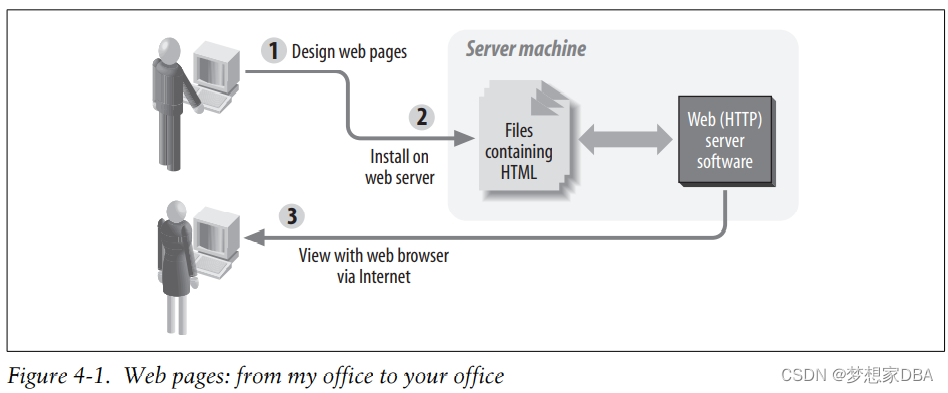
HTML Basics
HTML provides a way to mark up plain text so that it can have structure such as headings,paragraphs,and tables,and so that it can include non-textual elements such as images,buttons,and lines. HTML defines some special tags to designate the elements of the document. An element is a predefined logical part of the document such as a section heading. A tag is a name given to the element; tags appear between angle brackets (greater-than and less-than signs). Most elements are delimited with a pair of tags following the pattern: my document
<tagname>my document element</tagname>Notice the slash in front of the tag name at the end. It is this slash that designates the closing tag.
In addition to tags,HTML elements can have properties known as attributes. Attributes appear inside the tag, taking the general form:
<tagname attribute="value">my text here</tagname>In the following example of using an attribute,I define the background color of an HTML document to be white rather than the browser default (often gray). As you can see, bgcolor is an attribute of the BODY element:
<BODY bgcolor="white">
my document body
</BODY>You will want at least two sections in your document:
• A header section,delimited by the HEAD element,which contains information such as the page title.
• A body section,delimited by the BODY element,which contains the content of the page. This is the main part of the document.
The pattern for a simple HTML document is:
<HTML>
<HEAD>
<TITLE>Document title</TITLE>
...other "declarative" information
</HEAD>
<BODY>
content of page
</BODY>
</HTML>The following list describes these components:
HTML element
The HTML element,bounded by the <HTML> and </HTML> tags,houses the document’s head and body.
HEAD element
This section contains “declarative” information (that is,information that applies
to the entire page). The document title,keywords for search engines,and special instructions to the browser all go here, between <HEAD> and </HEAD>.
BODY element
The body corresponds to the visible parts of the web page. Between <BODY> and
</BODY> you put your text,marked up to indicate subheadings,images,links,
tables, and other presentable elements—everything you want the user to see.
At last we’re ready to look at our first HTML document:
<HTML>
<HEAD>
<TITLE>Famous Quotations: Richard III</TITLE>
</HEAD>
<BODY>
"A horse, a horse, my kingdom for a horse!" - Richard III
</BODY>
</HTML><html>
<head>
<title>Famous Quotations: Maxwell</title>
</head>
<body>
"A horse, a horse, my kingdom for a horse!" - Maxwell
<p> Browers interpret the paragraph element as a block of contiguous text</p>
<p>It gets separated from adjacent elements with a bit of extra space.</p>
<p>
These are a few of my favorite things:<br>
vi<br>
PL/SQL<br>
Linux
</p>
</body>
</html> 
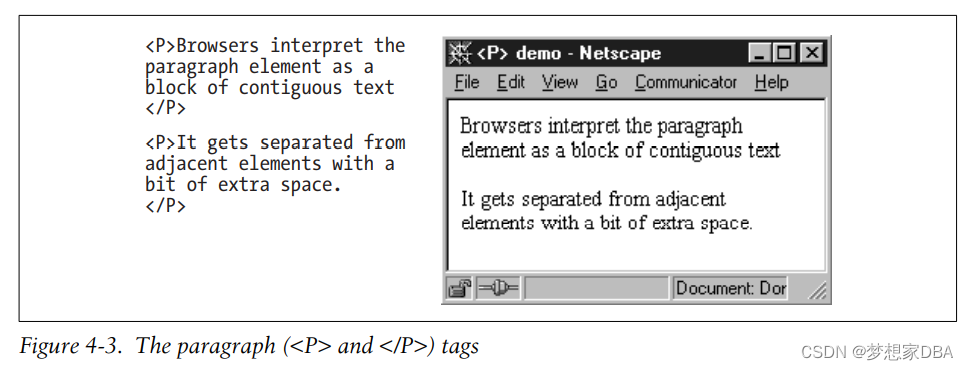
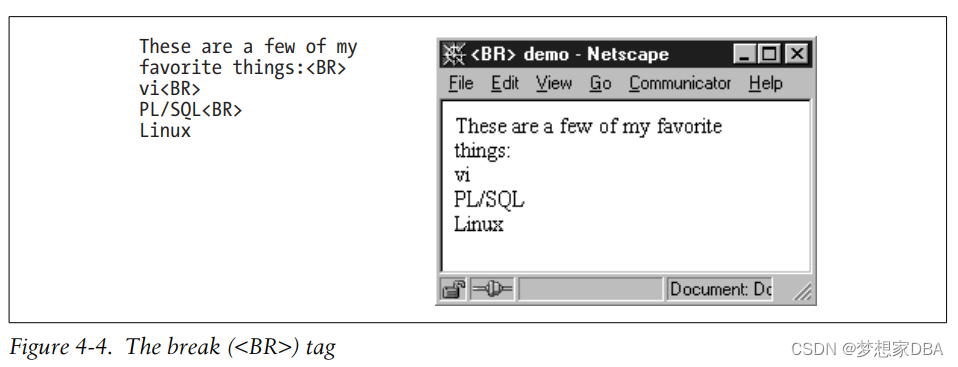
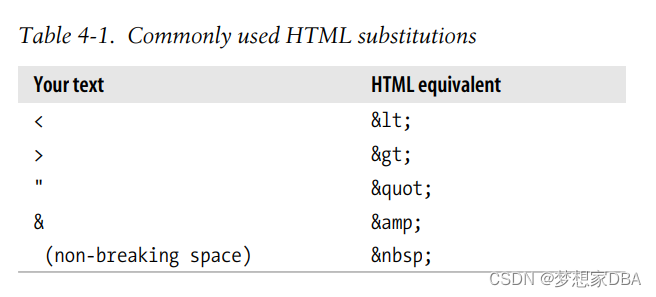

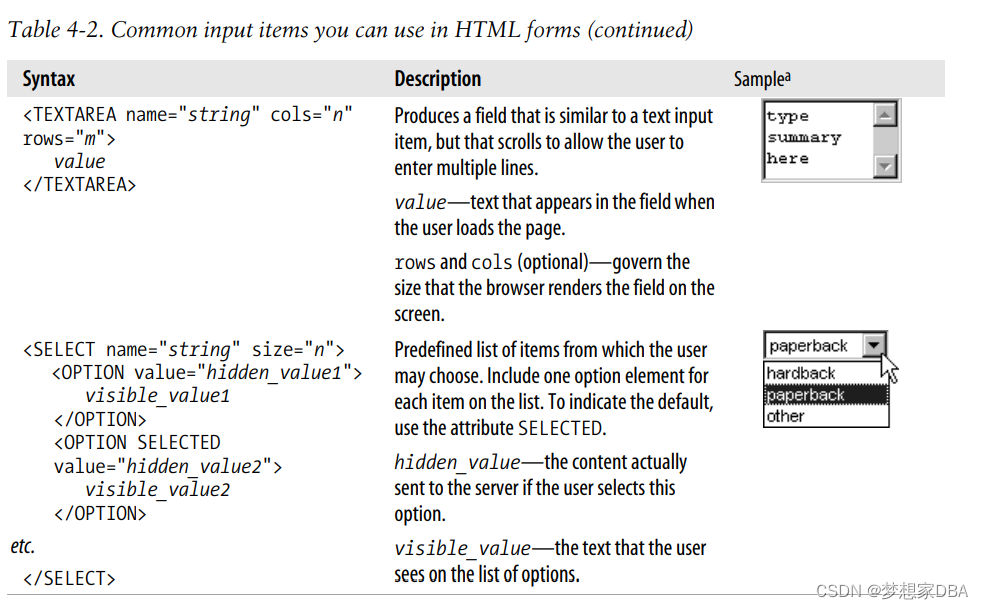
Building a web-based library form
The following is the HTML for the form:
<!--
* @Author: Maxwell
* @Date: 2022-08-04 14:50:42
* @LastEditTime: 2022-08-04 15:09:11
* @FilePath: \Web\weblearning\webyong.html
* @Description: build the beginnings of the web-based application
* Software:VSCode,env:
-->
<html>
<HEAD>
<TITLE>Add Book to Catalog</TITLE>
</HEAD>
<BODY bgcolor="white">
<H1>Add Book to Catalog</H1>
<FROM method="post" action="eat_add_book_form">
<P>ISBN
<INPUT type="text" name="isbn" maxlength="13" size="13">
</P>
<P>Title
<INPUT type="text" name="title" size="70" maxlength="2000">
</P>
<P>Bar code
<INPUT type="text" name="barcode_id" maxlength="100" size="35">
</P>
<p>Summary
<textarea name="summary" color="60" rows="8"></textarea>
</p>
<p>Author
<INPUT type="text" name="author" maxlength="200" size="40">
</p>
<p>Date published
<INPUT type="text" name="date_published" size="20" maxlength="40">
</p>
<p>Page count
<INPUT type="text" name="page_count" maxlength="6" size="6">
</p>
<p>
<INPUT type="submit" name="Submit" value="Submit">
</p>
</FROM>
</BODY>
</html>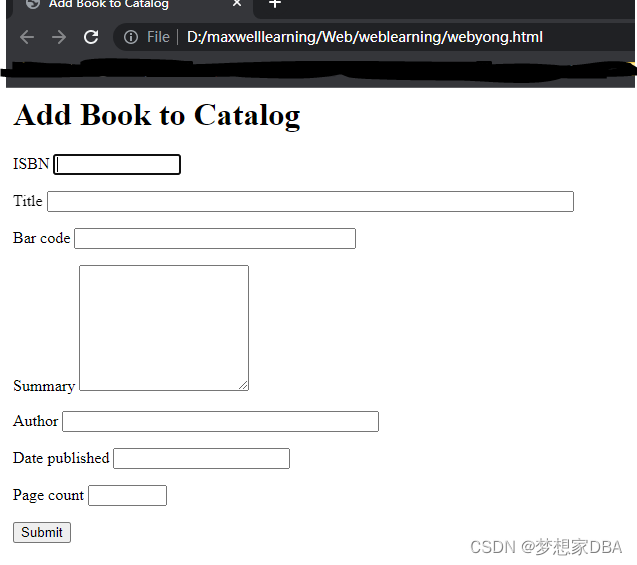
Using PL/SQL to Create Web Pages



边栏推荐
猜你喜欢
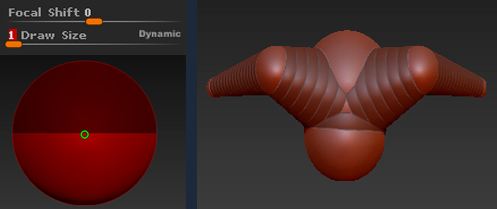
【3D建模制作技巧分享】ZBrush如何使用Z球
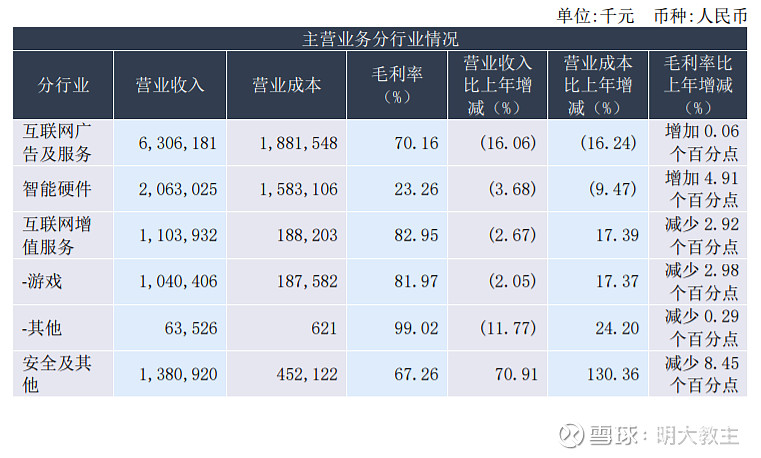
360市值四年蒸发3900亿,政企安全能救命吗?

赶紧进来!!!教你C语言实现扫雷小游戏(文章最后有源码!!!)
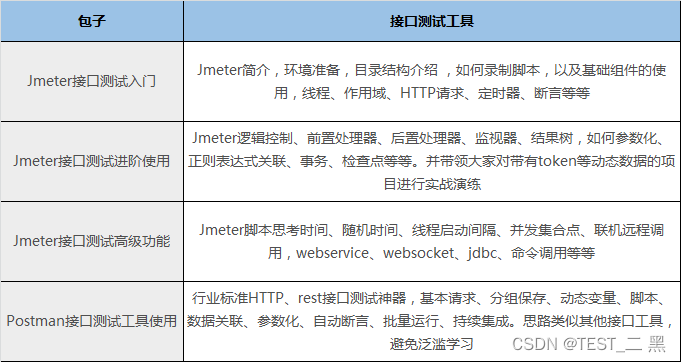
被领导拒绝涨薪申请,跳槽后怒涨9.5K,这是我的心路历程

Vscode连接远程服务器(一套配置成功)

「津津乐道播客」#397 厂长来了:怎样用科技给法律赋能?
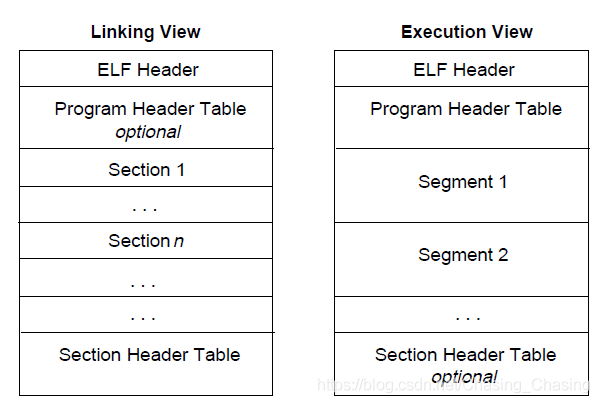
如何根据地址获取函数名
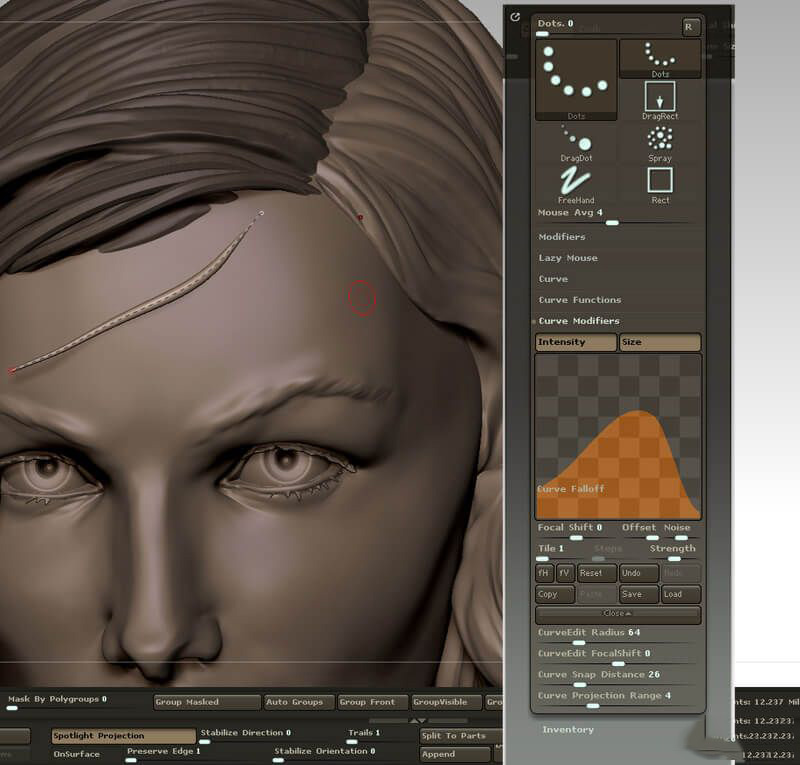
【3D建模制作技巧分享】在zbrush中如何雕刻头发 ZBrush头发雕刻小技巧

PID Controller Improvement Notes No. 7: Improve the anti-overshoot setting of the PID controller
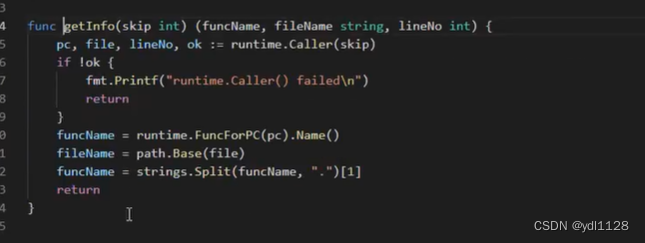
go语言的日志实现(打印日志、日志写入文件、日志切割)
随机推荐
panic: reflect: reflect.Value.SetString using value obtained using unexported field
Qt中的常用控件
吐槽 | 参加IT培训的正确姿势
自从新来了个字节20K出来的,就见识到了什么是天花板
从“草原牛”到“数字牛”:蒙牛的数字化转型之道
[QNX Hypervisor 2.2用户手册]10.4 vdev hpet
[Paper Notes KDD2021] MixGCF: An Improved Training Method for Graph Neural Network-based Recommender Systems
【SSR服务端渲染+CSR客户端渲染+post请求+get请求+总结】
Implementing class target method exception using proxy object execution
亿流量大考(3):不加机器,如何抗住每天百亿级高并发流量?
Pytorch分布式训练/多卡/多GPU训练DDP的torch.distributed.launch和torchrun
407. 接雨水 II
年薪50W+的测试工程师都在用这个:Jmeter 脚本开发之——扩展函数
当panic或者die被执行时,或者发生未定义指令时,如何被回调到
typeScript-promise
ffplay视频播放原理分析
The Record of Reminding myself
直接插入排序
SSM整合完整流程讲解
MySQL的JSON 数据类型1